[ad_1]
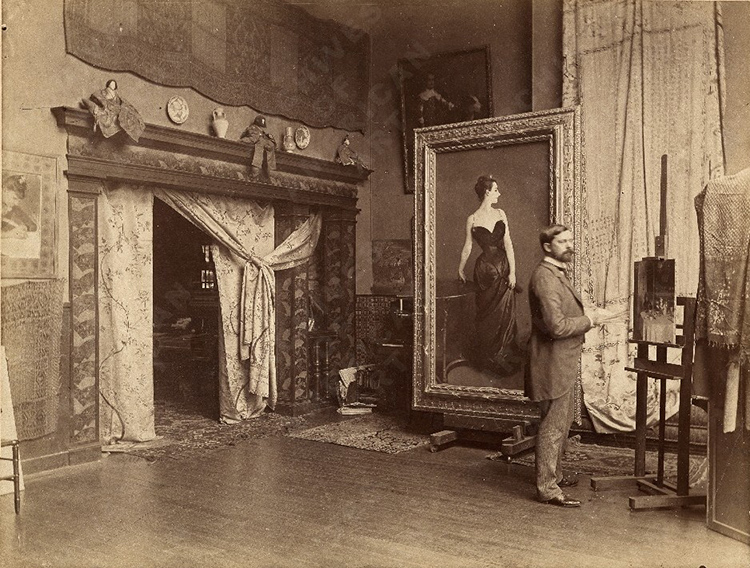
John Singer Sargent, photographed in is Paris Studio, 1885. (Photo: Wikimedia Commons (Public domain))
Artists hope to achieve fame in their own lifetime. American expatriate John Singer Sargent was among those who could claim this rarified status. In the late 19th and early 20th century, few painters were more sought after than him.
The rich of Gilded Age America and Edwardian London commissioned portraits by the renowned artist after having been drawn in by the natural warmth of Sargent’s treatment of each subject. Trained in the style of the Old Masters, the painter spent his life avoiding boredom by altering his subject matter and accepting intimidating commissions. When he passed away at age 69, Sargent had completed an impressive 900 oil paintings and over 2,000 watercolors—in addition to overflowing sketchbooks rich in observations from his travels.
Though he remains a famous portraitist, Sargent was more than the sum of his society paintings. His artwork offers insight into a creative mind and his private world among artists and intellectuals at the turn of the century. Read on to discover more about this fascinating artist, whose life and works stretch from Boston to Paris and beyond.
Who was John Singer Sargent?
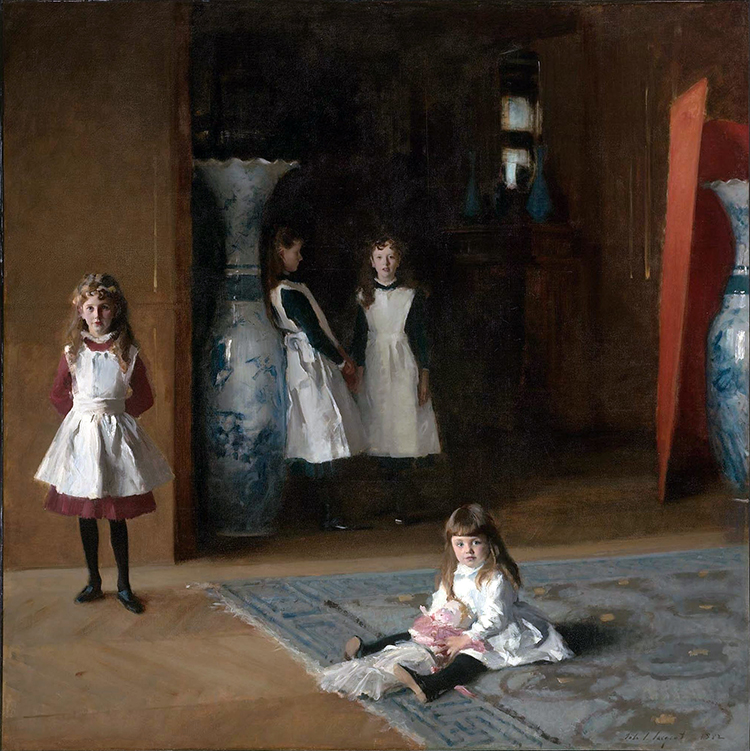
“The Daughters of Edward Darley Boit,” John Singer Sargent, 1882, now at the Museum of Fine Arts, Boston. (Photo: Wikimedia Commons [Public domain])
John Singer Sargent was born to American parents living in Florence in January of 1856. As a child, he lived with his family in various European cities and learned French, German, and Italian at a young age. Sargent also showed early talent in drawing. In 1874, the family relocated to Paris to allow young John to pursue a rigorous arts education.
The young Sargent began formal study with Carolus-Duran, a portrait painter whose expressive style would be highly influential on his pupil. According to H. Barbara Weinberg at the Metropolitan Museum of Art, Carolus-Duran taught his students to maintain the vigor and liveliness of their initial sketch in the final product. He also encouraged the study of the Old Masters such as Rembrandt, Van Dyck, and Velázquez. By 1877, Sargent’s work had been accepted at the prestigious Paris Salons, the arbiters of “acceptable” art in France at the time.
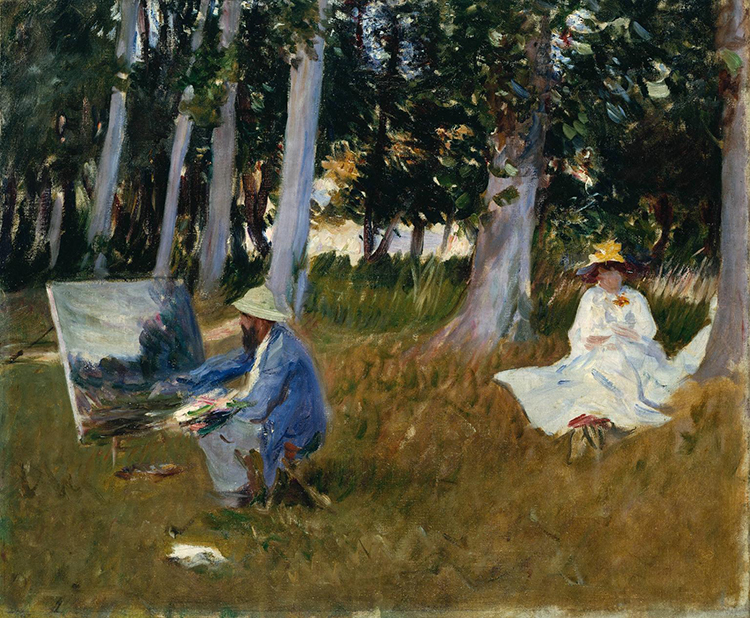
“Claude Monet Painting by the Edge of a Wood,” John Singer Sargent, 1885. Now at the Tate Britain. (Photo: Wikimedia Commons [Public domain])
Fundamental to Sargent’s studies were his travels as a young man. In 1876, Sargent visited America for the first time. In 1879, he studied the techniques of Velázquez’s works in Madrid and observed the paintings of Frans Halls in the Netherlands. Both artists painted portraits often with dark color schemes, which can also be seen in Sargent’s early work. Traveling to Venice, the young painter observed and painted the daily lives of the region’s inhabitants. In addition to his studies of Renaissance masterpieces, Sargent befriended and learned from those on the cutting-edge of late 18th-century art: the Impressionists. A friend of Monet, Sargent’s brushstrokes and occasional open-air painting was rather fresh for the art world, much like those of his contemporaries in Paris.
What distinguishes Sargent’s artistic style?
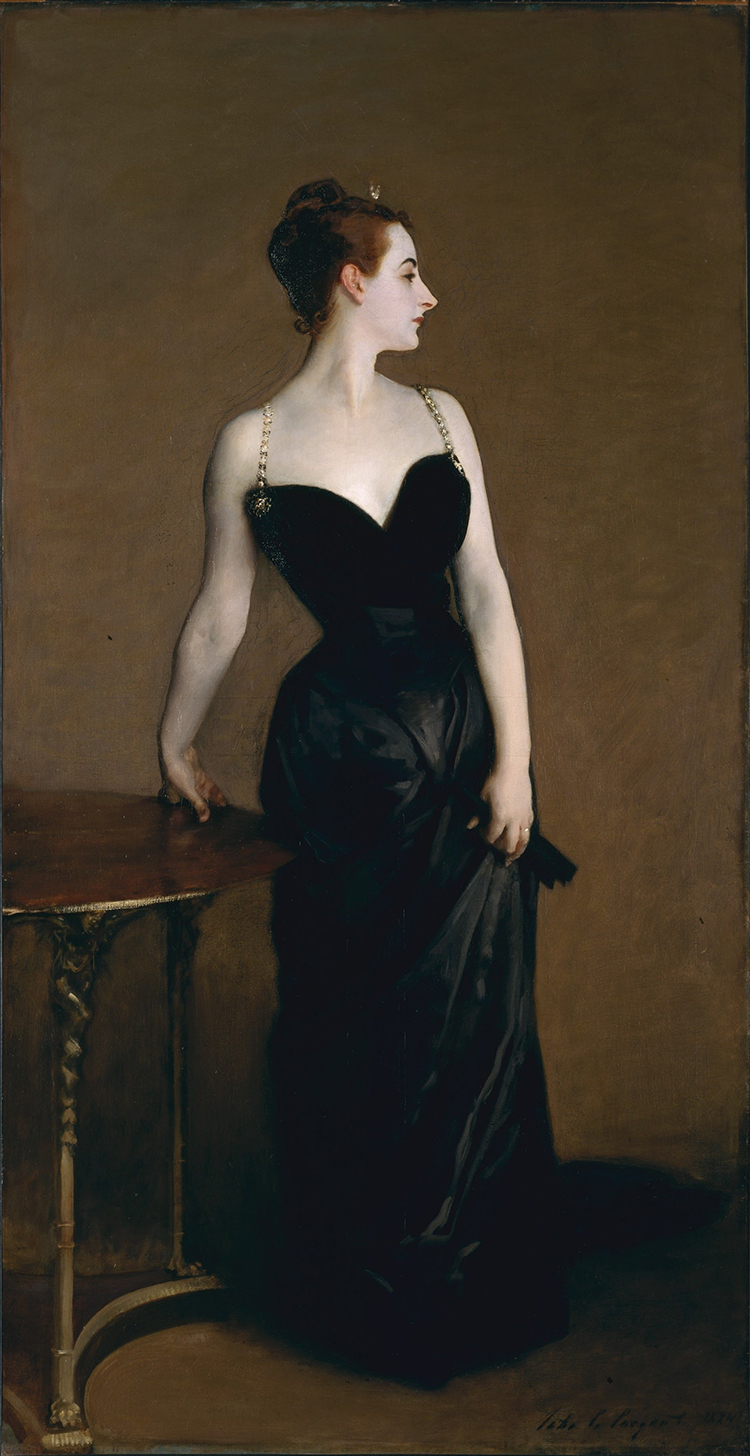
“Madame X (Madame Pierre Gautreau),” John Singer Sargent, 1884. Now at the Metropolitan Museum of Art. (Photo: Wikimedia Commons [Public domain])
Sargent is best remembered for his portraits of the wealthy and aristocratic in England (where he resided after 1886) and America. Although inspired by the Grand Manner tradition of imposing, aristocratic portraits heavy on virtue symbolism, Sargent’s portraits were distinctly modern. Rather than neo-classical posturing or stylized stiffness, Sargent chose poses which suggested natural, effortless moments frozen in time. The thick and fluid brushstrokes of Impressionist style brought warmth and rosy realism to the cheeks of his subjects. Considered by Sargent to be his best work, the portrait of the fashionable Madame Gautreau became emblematic of Sargent’s techniques. Known as Madame X, the audiences of the Salon in Paris in 1884 were shocked at the posture and ease of the image.
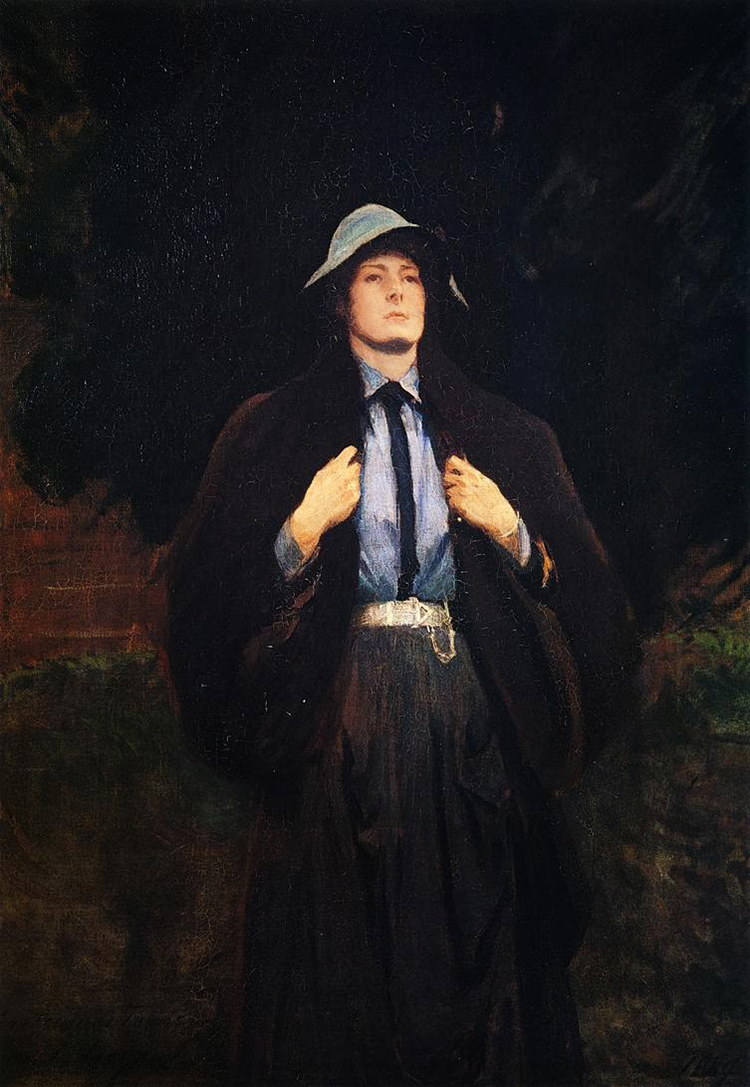
“Clementina Anstruther-Thomson,” John Singer Sargent, 1889. (Photo: Wikimedia Commons [Public domain])
Sargent also painted thousands of watercolor scenes using bright colors while highlighting the details of everyday life. He depicted the canals of Venice, the lofty peaks of the Alps, and alligators on the banks of a river. Later in life, watercolor became his medium of choice as he had grown tired of commissioned oil portraits.
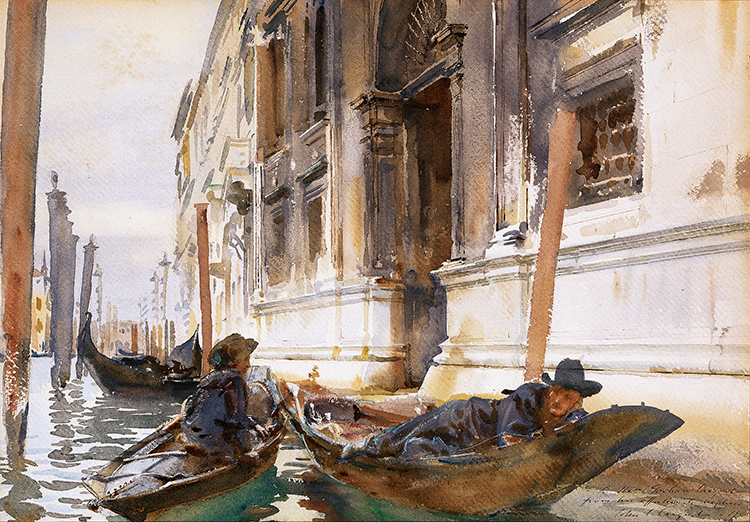
“Gondoliers’ Siesta,” watercolor, John Singer Sargent, circa 1904. (Photo: Wikimedia Commons [Public domain])
Watercolors of his travels became his focus starting in 1910. These were well received, with exhibitions in London and New York City. Today, impressive collections of these works are held by the Brooklyn Museum and the Museum of Fine Art in Boston. The two collections came together in 2014 for a joint exhibit focused on what the museums’ called a “bold and experimental approach to the medium [that] caused a sensation in Britain and great excitement in America.” Sargent’s fame was sufficient for such risks, and his sun-soaked watercolors are an example of an artist pursuing his own whims.
Who were the subjects of this elite portraitist?
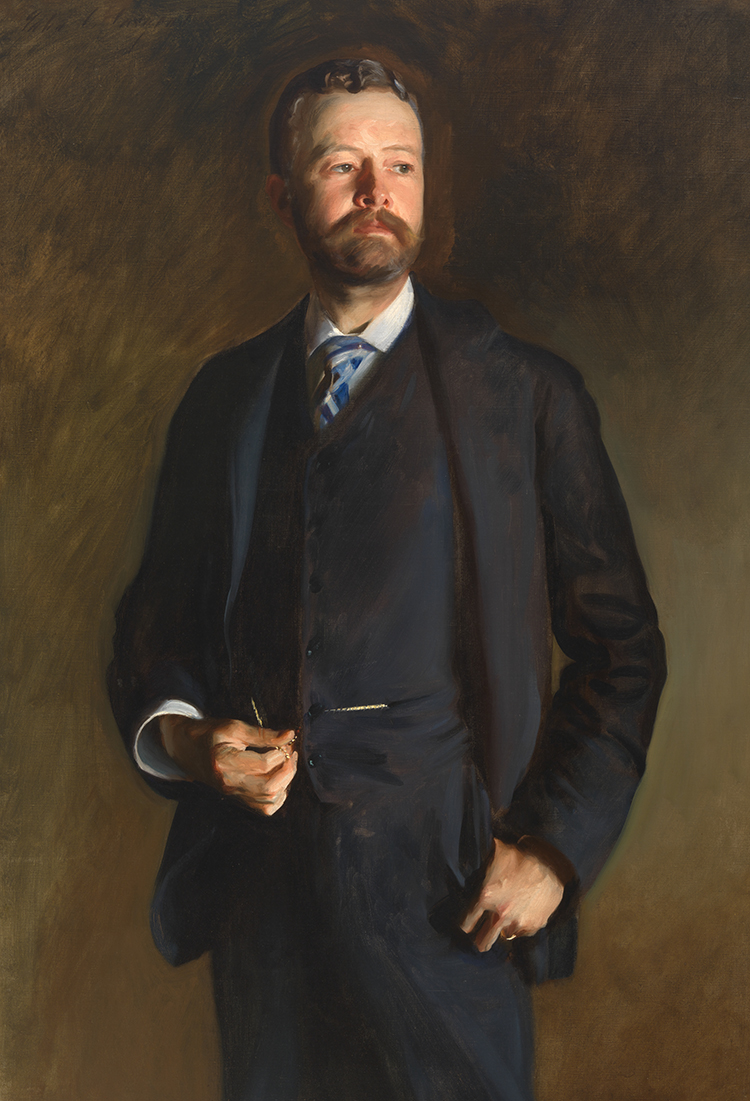
“Henry Cabot Lodge,” John Singer Sargent, 1890. (Photo: National Portrait Gallery [CC0])
In the 1880s, the young John Singer Sargent was known on the art scene as an accomplished portraitist for his paintings of Parisian women and children. According to Weinberg, after his move to England in 1886, the artist had to win over the more reserved Brits who were skeptical of his “French” approach to painting. Helpful in this quest were the American sitters he painted in the years after his relocation. Unafraid to be edgily European, the American portraits eventually brought in British patrons to sit for the increasingly-sought-after artist. Famous Americans painted by Sargent over his career include Isabella Stewart Gardner, Theodore Roosevelt, Woodrow Wilson, and members of famous families such as the Vanderbilts and Astors.
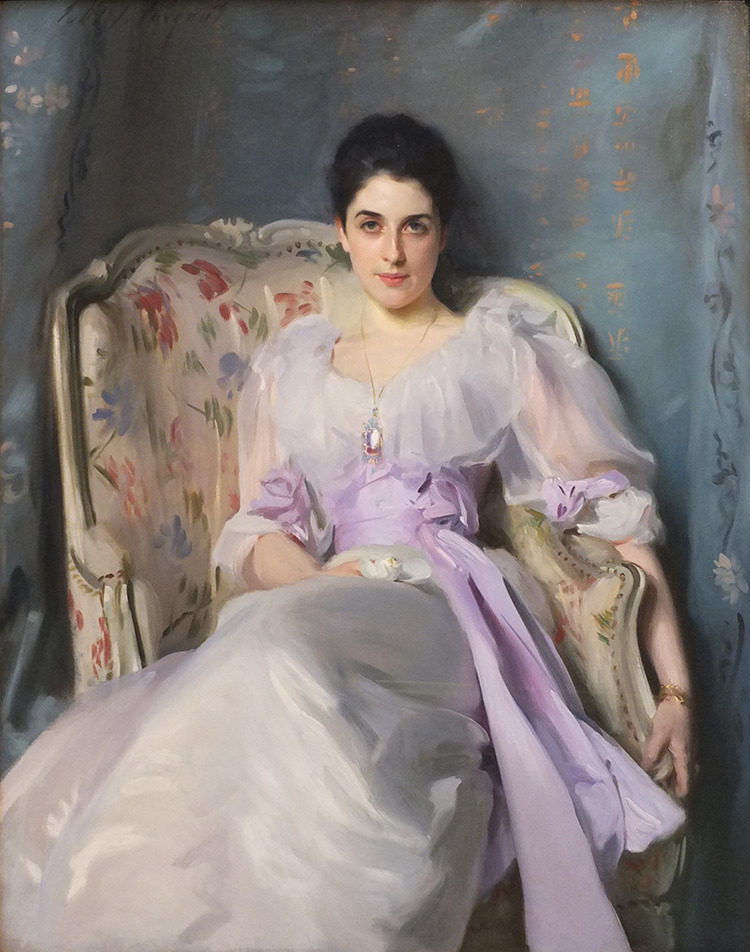
“Portrait of Lady Agnew of Lochnaw,” John Singer Sargent, 1892. (Photo: Wikimedia Commons [Public domain])
Among the British subjects of Sargent were aristocrats at almost every level of the peerage. These included the lovely Lady Agnew, painted in informal sweetness. Full-length portraits of Winifred, Duchess of Portland and Millicent, Duchess of Sutherland both display the young women as nymph-like yet regal.
In addition to the old money of Europe, Sargent captured his fellow artists in oil. Among these were Monet, Rodin, and the novelist Robert Louis Stevenson. Although Sargent often painted friends, peers, and family, his commissions from the wealthy earned him a respectable living. At about $5,000 a sitting (roughly $150,000 today), Sargent’s subjects paid dearly to be immortalized on canvas.
In 1918, Sargent was commissioned by the British government to illustrate scenes from World War I on canvas. He spent the final year of the war in France with the troops, observing both the British and Americans. His large oil work titled Gassed depicts a line of soldiers guiding each other after losing their sight in a gas attack. The carnage of what was then known as the “Great War” depicts subjects unrecognizable from the aristocrats Sargent had once painted. Hauntingly, the artist alludes to his education in Old Master tropes—the work resembles The Parable of the Blind by Pieter Bruegel the Elder.
What is John Singer Sargent’s legacy?
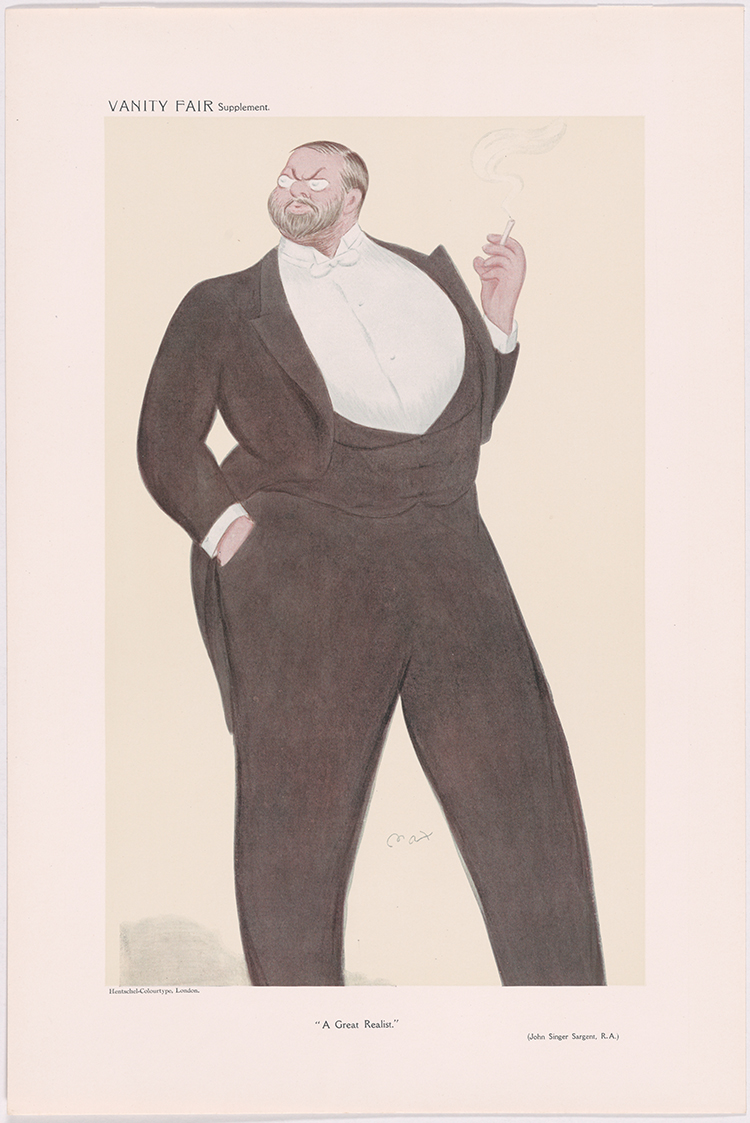
Lithograph Caricature of John Singer Sargent, from the Hentschel Colourtype Lithography Company, 1909. (Photo: National Portrait Gallery [CC0])
After retiring from high society portraiture, Sargent explored new mediums. His sketches show candid movements, many of which were never translated into paint. For the last three decades of his life, the painter devoted significant energy to a series of immense murals around the city of Boston. He was commissioned by the Boston Public Library, the Museum of Fine Arts, and Harvard University’s Widener Library. The library murals are still on view today and were restored in the early 21st century. They are religious in theme; Sargent’s unflattering treatment of Judaism, in particular, received criticism for drawing upon stereotypes. By contrast, the artist used mythical subjects in the murals at the MFA. The Beaux-Arts brilliance of the murals still welcomes visitors to the MFA today.
Whether in the sweeping black gown of Madame X, or the serious expressions of the Daughters of Edward Darley Boit, Sargent presented each of his portrait subjects as individuals with emotion and nuance. They went beyond the mere expression of social class, and as a result, he was the most sought-after portraitist of his time. But rather than resting on his laurels, Sargent followed his interests to pursue watercolors, travel, and ambitious murals. Today, his works—both monumental canvases and casual sketches—can be found in all the world’s most esteemed museums.
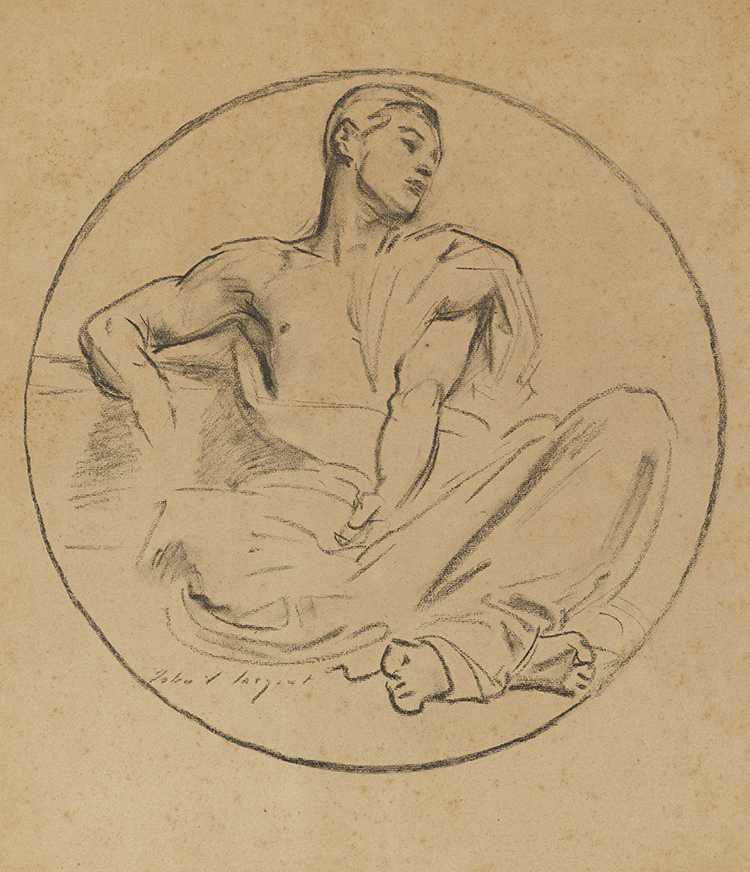
“Ted Shawn,” collotype, John Singer Sargent, circa 1915. (Photo: National Portrait Gallery [CC0])
Learn more about the sketches of John Singer Sargent, once the world’s most famous (and versatile) portraitist.
Related Articles:
The Radical Art of the Spanish Renaissance Painter Known as “El Greco”
5 Facts About Rosa Bonheur, France’s Most Celebrated Painter of Animals
Learn About Masaccio, the Italian Renaissance Painter With a Short Life but Long Legacy
15 of the Greatest Painters of All Time Whose Influences Live On Today
[ad_2]
Source link

Leave a Reply